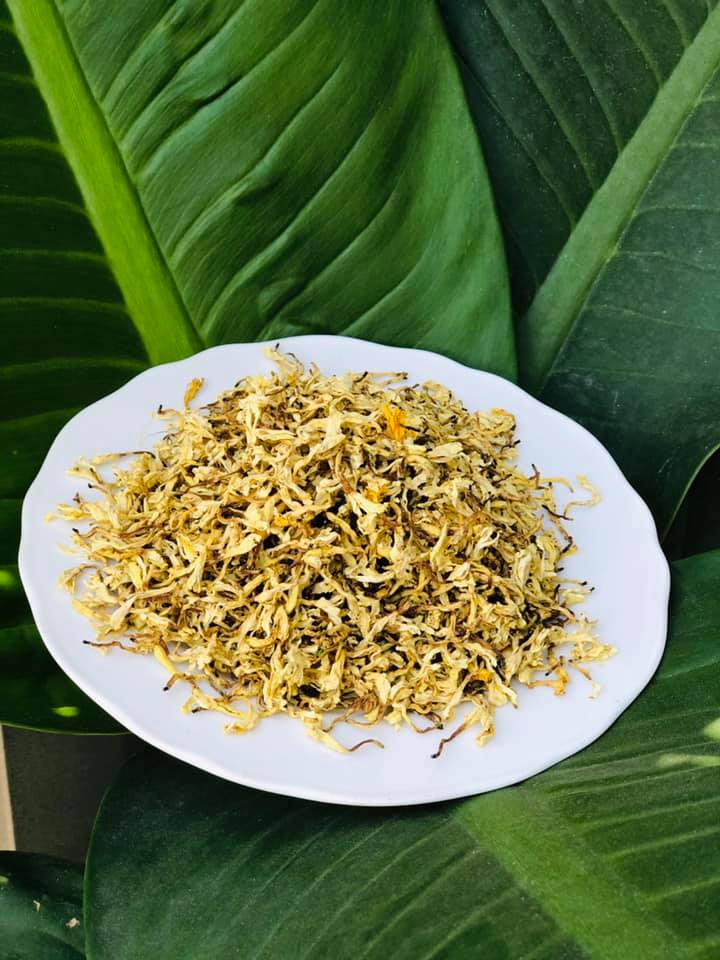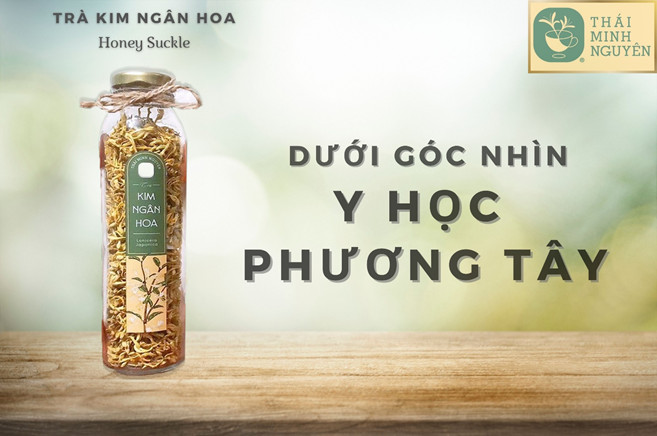Honeysuckle is scientifically named Lonicera japonica Thumb., belonging to the Honeysuckle family – Caprifoliaceae, or commonly known as ‘Nhẫn đông’ (with 6 different types of honeysuckle).

The botanical characteristics and distribution of the honeysuckle plant
- Honeysuckle is a climbing plant, with stems that can grow up to 10m or more.
- When young, the stems are light green, covered with fine hairs. Mature stems turn light brownish-red, smooth.
- Leaves are opposite, sometimes in groups of three, elongated egg-shaped. Leaf blades are 1.5 – 6cm wide. An interesting feature of honeysuckle leaves is that they remain green throughout the year and do not fall off in winter.
- The flowers are tubular with 2 lips, the large lip divided into 3 or 4 small lobes, initially white, turning yellow after blooming for a while. The flowers have a mild fragrance and a bitter taste, usually blooming from March to May.
- The fruit of the honeysuckle plant is spherical and black, typically appearing from June to August.
This is a type of plant that primarily grows in East Asia and Northeastern North America. In our country, honeysuckle grows wild in many mountainous provinces, most notably in Cao Bang, Lang Son, Ninh Binh, Thanh Hoa, Nghe An, Bac Thai, Quang Ninh, and Phu Tho.
How to grow honeysuckle
Planting honeysuckle by layering. Cut the branches into rounded pieces, bury them in the soil, allowing the last section to emerge, and water evenly during the initial period. It is best to plant in February – March and September – October. Planting along fences for medicinal and ornamental purposes.
Honeysuckle is a type of plant that grows abundantly in our country.
Chemical composition, Parts used for medicine of honeysuckle
Honeysuckle contains chemical components such as Flavonoids (inoside, lonicerin), saponins… People often harvest honeysuckle buds for drying or drying, and honeysuckle branches and leaves for drying or drying. Harvest flowers when they are about to bloom or just bloomed, still white in color, not yet turned yellow is preferable.
Uses, treatment with honeysuckle
Use honeysuckle to treat acne, itching, ulcers, allergies, scabies, smallpox, measles, and dysentery.
Dosage of honeysuckle
Use 4 -6g of flowers or 10 – 12g of leaves, in decoction form. It can be used in the form of pills or medicinal alcohol.
Note: Pay attention to distinguishing honeysuckle from Gelsemium (very toxic) because they have similar stem and leaf colors.
The effects of honeysuckle plant
Everyone knows that honeysuckle is a plant with many uses, especially in treating diseases. Some prominent therapeutic effects of the plant include:
- Acting as a natural antibiotic
- Increasing blood sugar levels
- Preventing vertigo
- Treating diarrhea
- Promoting diuresis
- Treating colds and fever
- Treating acne, itching
- Conditions related to gastritis, colitis
- Treating mumps, tonsillitis
Moreover, as a shrubby plant, honeysuckle is very suitable for ornamental decoration. It is often used in parks, schools, creating a cool green space. Additionally, since the plant has climbing abilities, many people choose to plant it as a fence. The flowers of honeysuckle emit a faint fragrance, enhancing the air quality and providing a refreshing feeling to those around.

 Tiếng Việt
Tiếng Việt


